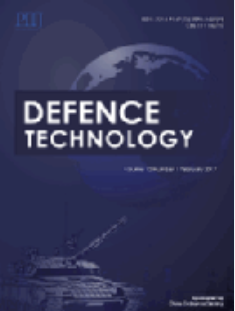The damage of sequential explosions in reinforced concrete: Experimental and numerical investigation
IF 5
Q1 ENGINEERING, MULTIDISCIPLINARY
引用次数: 0
Abstract
The development of guidance technology has made it possible for the earth penetration weapons (EPWs) to impact the target repeatedly at a close range. To investigative the damage of single and sequential strike induced by the EPWs, experimental and numerical investigations are carried out in this paper. Firstly, a series of sequential explosion tests are conducted to provide the basic data of the crater size. Then, a numerical model is established to simulate the damage effects of sequential explosions using the meshfree method of Smoothed particle Galerkin. The effectiveness of numerical model is verified by comparison with the experimental results. Finally, based on dimensional analysis, several empirical formulas for describing the crater size are presented, including the conical crater diameter and the conical crater depth of the single explosion, the conical crater area and the joint depth of the secondary explosion. The formula for the single explosion expresses the relationship between the aspect ratio of the charge ranging from 3 to 7, the dimensionless buried depth ranging from 2 to 14 and the crater size. The formula for the secondary explosion expresses the relationship between the relative position of the two explosions and the crater size. All of data can provide reference for the design of protective structures.
连续爆炸对钢筋混凝土的损伤:试验与数值研究
制导技术的发展使得对地侵彻武器在近距离内对目标进行重复打击成为可能。为了研究水轮机单次冲击和连续冲击所造成的损伤,本文进行了实验和数值研究。首先,进行了一系列连续爆炸试验,提供了弹坑大小的基本数据。然后,利用光滑粒子伽辽金的无网格方法建立了序列爆炸损伤效应的数值模拟模型。通过与实验结果的对比,验证了数值模型的有效性。最后,在量纲分析的基础上,提出了描述弹坑大小的几个经验公式,包括单次爆炸的锥形弹坑直径和锥形弹坑深度,二次爆炸的锥形弹坑面积和联合深度。单次爆炸的公式表达了装药长径比3 ~ 7、无因次埋深2 ~ 14与弹坑大小之间的关系。二次爆炸的公式表达了两次爆炸的相对位置与陨石坑大小之间的关系。这些数据可以为防护结构的设计提供参考。
本文章由计算机程序翻译,如有差异,请以英文原文为准。
求助全文
约1分钟内获得全文
求助全文
来源期刊

Defence Technology(防务技术)
Mechanical Engineering, Control and Systems Engineering, Industrial and Manufacturing Engineering
CiteScore
8.70
自引率
0.00%
发文量
728
审稿时长
25 days
期刊介绍:
Defence Technology, a peer reviewed journal, is published monthly and aims to become the best international academic exchange platform for the research related to defence technology. It publishes original research papers having direct bearing on defence, with a balanced coverage on analytical, experimental, numerical simulation and applied investigations. It covers various disciplines of science, technology and engineering.
 求助内容:
求助内容: 应助结果提醒方式:
应助结果提醒方式:


